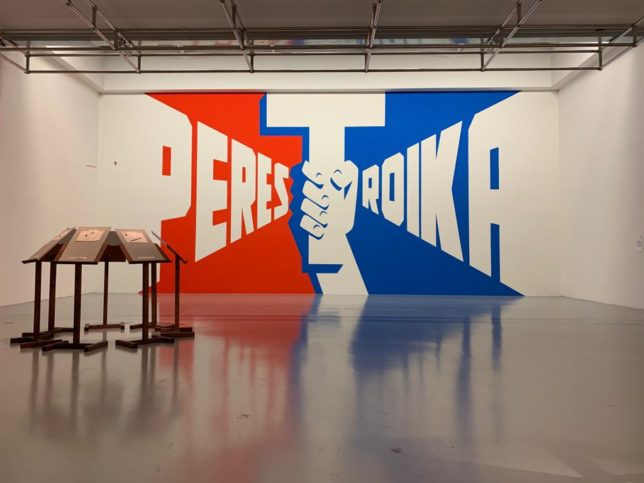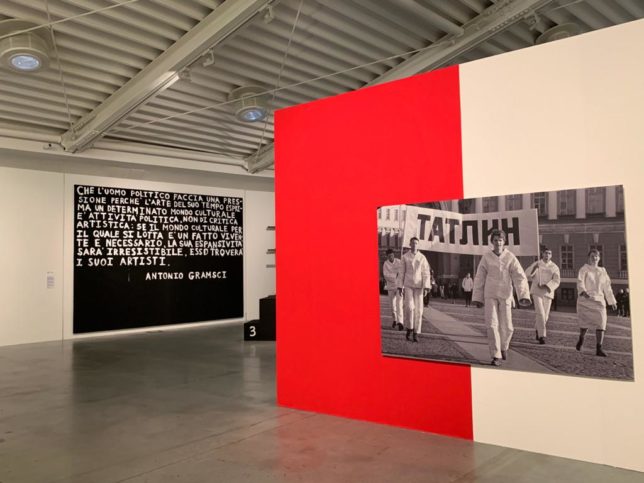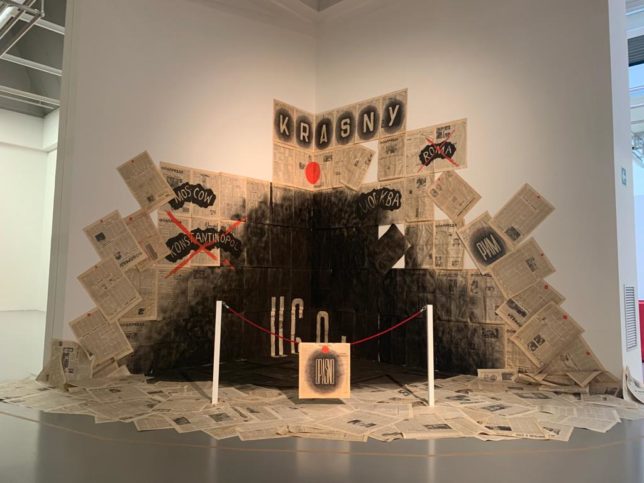
The Missing Planet. Visions and Re-visions of Soviet Times from the Pecci Center and other collections
By Isabella Pircio (Istituto Lorenzo de’ Medici)
Centro Pecci, Prato, 8 November 2019 – 3 May 2020
From the exterior, Centro per l’Arte Contemporanea Luigi Pecci’s modern architecture is quite striking within the serene city of Prato. Located about thirty minutes North-West of the Renaissance epicenter, it may seem distant and out of reach for those located in Florence; however, the Center for Contemporary Art is easily accessible by various means of public transportation. The museum’s website includes extensive directions and resources for any potential visitors, from both Florence and Milan. Once in Prato, Centro Pecci is easy to locate due to the architectural project and expansion titled, “Sensing the Waves” by Maurice Nio and inaugurated in 2016. Circular in nature, and metallic, the façade resembles an enormous space craft, or a flying saucer. Founded in 1988, Centro per l’Arte Contemporanea Luigi Pecci was the first Italian institution crafted with the specific and sole focus on presenting, collecting, documenting, and studying all visuals arts as expressions of the contemporary world that connect people with the major themes of life and society.

Three decades ago, Mikhail Gorbachev’s policies of perestroika and glasnost allowed radical change within the Soviet Union, and subsequently, Centro Pecci inaugurated the exhibit “Contemporary Russian Artists”. The museum boldly displayed the undeniable feelings of impressive progress, feelings of optimism, and fear of an unpredictable future. In 2007, the exhibition titled “Progressive Nostalgia” was developed as a sequel to the prior and highlighted the overwhelming delusion and mourning of what could have been. Today, the museum is exhibiting the finale to the Soviet centered tribology, titled “The Missing Planet”. The exhibition functions as an account of the former Soviet Union, utilizing the museum’s permanent collection as the nucleus. Stefano Pezzato, the museum’s collections manager, along with guest curator Marco Scotini and designer Can Altay, collaborated to create a unique display of the significant historical moments as well as their impact and influence on the artists and their work. The exhibition space is divided into sections and structured with a particular path; visitors explore a two-sided narrative; the first recounting the utopian fairytale from the first exhibition, and the memory of failure and delusion represented in “Progressive Nostalgia”. Directing guests first through the dozens of artworks from the museum’s collection provides an invaluable glimpse into the first two parts of this trilogy and provides the necessary context to continue. The exhibit presents an “archaeological approach” to history and utilizes the nearly one-hundred works on display to push visitors into a conversation about the former Soviet Union.

“The Missing Planet” introduces many more questions than it does answers. To accompany the exhibition itself, Centro Pecci has developed a variety of special events and programs open to the public. Due to the complex topics explored throughout the museum, visitors may find difficulties relating to or understanding everything presented. Guests may find themselves engaged in an unexpected experience that combines a traditional aesthetic experience with an informative one. Reading the various wall texts and labels provides essential context that younger visitors, especially, may not be aware of. Besides the exhibition itself are specially curated events, courses, and cinema programs organized for a wide range of students; guided tours are available free of charge. With “on-the-road laboratories” designed for the general public, Centro Pecci offers unique contemporary art experience both in and out of the museum space, sparking a dialogue with a public that may be hesitant or merely unaware of the museum of its collection. Contemporary art in the midst of the Renaissance may seem obscure to some, but it provides a nice break from the norm. Giving a unique contemporary art experience, Centro per l’Arte Contemporanea Luigi Pecci offers visitors a glimpse into the language of contemporary art.
Photo courtesy Isabella Pircio